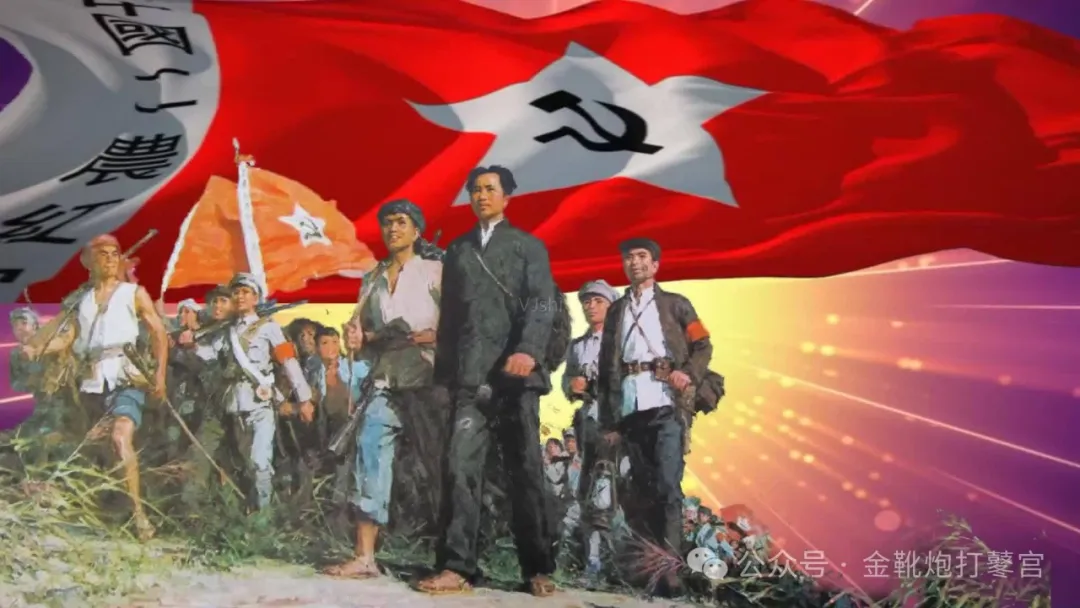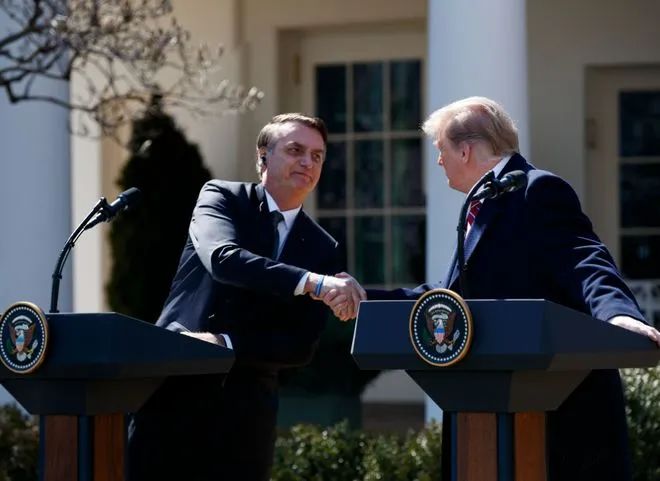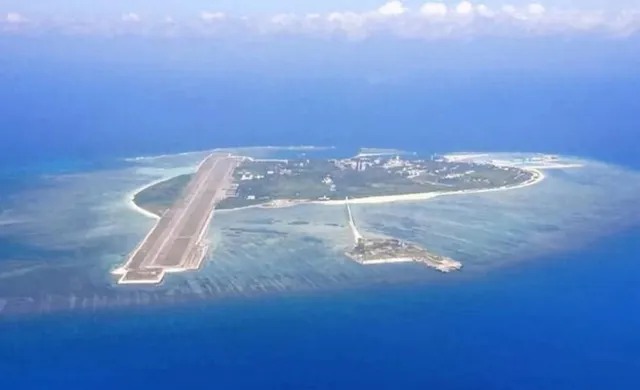南德智库报告第四章 战略竞争:危机、升级和大国冲突的模式
CHAPTER FOUR 第四章
Strategic Rivalry: Patterns in Crisis, Escalation, and Great Power Conflict
战略竞争:危机、升级和大国冲突的模式
Despite growing tensions, the overall risk of war between China and the United States remains low. Although commentators routinely suggest that the two countries could enter into conflict, neither China nor the United States has shown much inclination to fight the other. But shifting incentives could lead both countries to reconsider the potential risks and benefits of conflict. Scholars have analyzed some of the potential drivers and factors that could prompt such recon-sideration.
1 The infinite variability of possible political events that could result in war makes it impossible to predict a future path to war; analysts obviously cannot access data about develop-ments that have not yet taken place. However, we do have data on past great power rivalries and the events that led to conflict. Drawing from these data, we can identify key factors and devel-opments that collectively elevate the probability of hostilities between China and the United States. Adapted to the U.S.- China rivalry, each of these factors may be modified to serve as a key assumption about how systemic conflict might look on the path to Chinese primacy. Of these factors, the following are especially relevant to our analysis and thus merit a closer look:
尽管紧张局势不断加剧,美中之间发生战争的风险总的来说仍然较低。虽然研究学者屡屡暗示两国发生冲突的可能,但中国和美国都没有表现出与对方开战的意图。但是,局势的变化可能会导致两国重新审视潜在冲突的利与弊。学者们分析了可能促使这种重新考虑的相关潜动因。
1可能导致战争之政治事件的不确定性使得人们难以预测未来战争之路;分析家们显然无法未卜先知获得未来冲突的有关数据。为此,只能依赖过去大国竞争、导致冲突事件的数据进行推测。从这些数据中,可以发掘关键因素和事态发展事实,“温故知新”地预判中美之间发生敌对行动的概率。根据美中竞争的情况,既往冲突引发因素中的每一项似乎都可以作为中国趋往全球首要地位的进程中引发与美系统性冲突可能出现之关键假设的参照。下面,我们详细介绍先引发美中系统性冲突之相关因素的分析研究:threat perception; 威胁感; (2) issue spiral; 螺旋上升的问题 (3) serial crises; 系列危机 (4) alliance building; 联盟建设 (5) arms races; and军备竞赛 (6) rivalry multilateralization. 对抗的多边化
Each of these factors is explored in more detail in a RAND study on scientific findings regarding key political and strategic structural drivers of great power war.
兰德公司关于大国战争的关键政治和战略结构驱动因素的科学研究报告对上述每个因素都进行了更详细的探讨。
2 In the past twenty years scholars have gained new insights on the causes of interstate conflict, owing in part to the availability of more data about past conflicts. Sifting through databases covering hundreds of conflicts, Paul Senese and John Vasquez have pioneered the argument that territorial disputes provided a primary cause of interstate conflict.
2 在过去的二十年里,学者们对国家间冲突起源有了新的认识,部分原因是有了更多关于过去冲突的数据。保罗——塞内塞和约翰——瓦斯奎兹通过对涵盖数百个冲突的数据库进行筛选,率先提出了领土争端是国家间冲突的主要原因论点。
3 Since the early 2000s, however, the academic community has advanced beyond this finding to focus on conflict-prone relationships between countries—rivalries—as a critical driver of conflict. Brandon Valeriano describes rivalry as “a situation of long-standing, historical animosity between two countries with a high probability of serious conflict or crisis.” Rivalry assumes a “zero-sum game” over incompatible goals in which one side seeks to ensure its own security at the expense of the other.
3 然而,自21世纪初以来,学术界已经超越了上述发现,将重点放在国家之间容易发生冲突的关系——竞争——作为冲突的一个关键驱诱因。布兰登——瓦莱里亚诺(Brandon Valeriano)将竞争描述为“两个国家之间长期的、历史性的敌意,很有可能发生严重冲突或危机”。竞争假定了一个不相容目标的“零和游戏”,其中一方试图以牺牲另一方的利益来确保自己的安全。
4 Vasquez defines rivalry as a “relationship characterized by extreme competition, and usually psychological hostility, in which the issue positions of contenders are governed pri-marily by their attitude toward each other rather than by the stakes at hand.”
4 瓦斯奎兹将竞争定义为 “以极端竞争为特征的关系,通常是心理上的敌意,在这种关系中,竞争者的问题立场主要由他们跟对方的态度而不是手头的利害关系所决定。”
5 Gary Goertz and Paul Diehl have noted that rivalries tended to feature repeated sequences of militarized interstate disputes.
5 加里——戈尔茨和保罗——迪尔指出,竞争往往以反复出现的军事化国家间争端为特征。
6 Scholars have identified two key types of dispute that lie at the core of rivalries. The first type is over disputes of territory and sovereignty—which we will label territorial disputes. Territorial issues remain common, especially among contiguous, minor powers (countries with modest economies and limited ability to project military forces beyond the border). Among major powers (countries with more advanced, wealthier economies and militaries with some capability of deploying beyond the nation’s borders), however, the disputes appear quite different.
6学者们已经确定了两种关键的争端类型,它们是竞争的核心所在。第一类是关于领土和主权的争端——我们将称之为领土争端。领土问题仍然很常见,特别是在毗连的小国(经济不发达、向境外投射军事力量的能力有限的国家)之间。然而,在大国(经济更发达、更富裕、军队有一定能力部署到国界之外的国家)之间,争端似乎很不一样。
The second type of dispute concerns issues of status, influence, and hierar-chy in a given order or system—referred to as positional disputes. Rivalries over position and status are exceptionally difficult to resolve, and they end only when one or more rivals are forced to move down a hierarchy in a significant and permanent manner.
第二种类型的争端涉及到一个特定的秩序或系统中的地位、影响和等级问题——被称为位置性争端。关于位置和地位的竞争是非常难以解决的,只有当一个或多个竞争对手被迫以一种显著而持久的方式降低等级时,它们才会结束。
7A strategic rivalry may be understood as a type of interstate hostility that involves primar-ily positional disputes, but may also involve territorial disputes, including those involving allies. Karen Rasler and William Thompson define a strategic rivalry as that which occurs between two countries that view each other as (1) competitors—that is, peers or near peers that compete over unresolved, incompatible goals involving positional and possibly also ter-ritorial issues;(2)threats—that is, having both the intent and capacity of carrying out mili-tary attacks against each other.
7 战略竞争也许理解为一种国家间的敌对行为,主要涉及地位之争,但也可能涉及领土争端,包括涉及盟友的争端。卡伦——拉斯勒和威廉——汤普森将战略竞争定义为发生在两个国家之间的竞争,这两个国家将对方视为(1)竞争者——即同行或近似同行,涉及立场和可能的领土问题尚未解决的、不相容的目标而竞争;(2)威胁——也就是说,双方都有跟对方进行军事攻击的意图和能力。
8 Several additional features of rivalries allow us to more fully describe the phenomenon.
8竞争的几个其它特征使我们能够更全面地描述这一现象。
Characteristics of Rivalries Threat Perception
竞争的特点 威胁的感知
The official designation of another country as a top adversary and source of threat provides an inducement to the government to authorize policies against that country. The Cold War serves as an archetype in that both Moscow and Washington, D.C., designated each other as a top adversary and threat. This incentivized both countries to engage in confrontational policies and to risk conflict with one another. For our purposes, we will assume that both Beijing and Washington have designated each other as a top adversary and source of threat. This assumption hardly requires a leap of faith. given the U.S. government’s designation of China as a “strategic competitor” in 2017. In 2021 the Secretary of Defense identified China as one of the department’s top three challenges, calling it a “pacing challenge.”A change, however, would be the designation by both capitals of each other’s country as a serious threat to the respective nation’s security and survival.
官方认定一个国家为头号对手和威胁来源,为政府授权制定应对该国的政策措施提供了前提。冷战就是一个典型,因为莫斯科和华盛顿都把对方视为首要对手和威胁,这导致两国冒着发生冲突危险,采取对抗性举措。这里,出于研究目的,我们假设北京和华盛顿都把对方视为头号对手和威胁来源。鉴于美国政府在2017年把中国指定为“战略竞争对手”,这一假设几乎不需要信仰的飞跃。"2021年,国防部长把中国确定为该部门的三大挑战之一,称其为 "步伐挑战"。"然而,一个变化是两国政府都把对方国家指定为国家安全和生存的严重威胁。
Issue Spiral
问题螺旋
Another important factor is the proliferation of intractable dispute issues, which may be of both positional and territorial types. The proliferation in variety, frequency, and volume of disputes typifies the problematic relationships most prone to conflict. The intractability of the disagreements and hostility generated by repeated failures to prevail incentivizes each side to regard the other country as an enemy state that cannot be trusted. This also raises the risk that crises can break out in unexpected situations, owing to the depth of antagonism.
另一个重要因素是棘手的争端问题之扩散,这些问题可能是地位和领土类型的。争端的种类、频率和激增的数量是最易引发冲突的关系问题之典型。棘手的分歧和屡战屡败所产生的敌意,使彼此都把对方视为不可信任之敌国。这就导致风险增高,并因为对立地加深,危机地爆发可能是突如其来的。
This assumption once again merely expands on the reality of an expanding array of intractable disputes over trade, technology, influence operations, human rights, and many other issues in recent years.David Dreyer has called this problem “issue spiral,” which he defines as a “dynamic process in which tension increases as multiple issues accumulate.” According to Dreyer, issue spirals “increase perceptions of fear and distrust” and can lead to the conclu-sion that the only way to achieve favorable issue settlement in regard to all disagreements is through “imposing one’s will.” Moreover, issue accumulation increases the stakes of compe-tition and for this reason may, over time, make war more appealing as a course of action.
这一假设又一次详述了近年来在贸易、技术、影响行动、人权和许多其它问题上的一系列棘手争端现实。大卫——德雷尔将这一问题称为 "问题螺旋",他将其定义为 "随着多个问题的积累,紧张局势加剧的动态过程"。根据德雷尔的说法,问题的螺旋上升“增加了恐惧和不信任的感觉”,并可能导致这样的结论,即在所有分歧中实现有利问题解决的唯一方法是“强加于人的意志”。此外,问题的积累增加了竞争的风险,因此,随着时间的推移,战争作为一种行动方式可能会更具吸引力。
Multilateralization of Rivalry
竞争的多边化
Owing to the nature of competition for influence and leadership, strategic rivalries often involve other countries. Intense competition between great powers could polarize a region, adding pressure on relevant countries to “take sides.” The phenomena of multilateralization, in which rivalries between major powers overlap with those involving other countries, is common in strategic rivalries between great powers. Great power rivals often have allies that are engaged in their own disputes with the rival power. In the lead-up to World Wars I and II, for exam ple, the overlapping competitions and hostile relationships among world powers eventually coalesced into competing alliances. The Cold War, too, featured numerous overlapping rival-ries between the allies of the superpowers. These parallel disputes could in some cases escalate to the point of involving the Soviet Union and the United States in a near war. An example is the Cuban Missile Crisis of 1962, which nearly escalated into a war between the United States and the Soviet Union. Moreover, each great power may encourage other countries to step up their disputes or to refuse to compromise in order to complicate the strategic situation of the rival, which in turn would further accelerate the multilateralization of disputes.
由于争夺影响力和领导权的性质,战略竞争往往涉及其他国家。大国之间的激烈竞争可能使一个地区两极分化,增加相关国家 “站队”的压力。大国之间的竞争与涉及其它国家的竞争相重叠,这种多边化的现象在大国之间的战略竞争中很常见。大国的竞争对手往往有自己的盟友,而这些盟友也存在与对手大国发生争端。例如,在第一次和第二次世界大战之前,世界大国之间的重叠竞争和敌对关系最终凝聚成了相互竞争的联盟。冷战期间,超级大国的盟友之间也出现了许多重叠的竞争关系。这些平行的争端在某些情况下可能升级到使苏联和美国卷入一场近乎战争的地步。1962年的古巴导弹危机就是一个例子,它几乎升级为美国和苏联之间的战争。此外,每个大国都可能鼓励其他国家加强争端或拒绝妥协,以使对手的战略形势复杂化,这反过来又会进一步加速争端的多边化。
Arms Races
军备竞赛
The official designation of another country as a top threat and adversary provides ample justification for significant increases in defense spending aimed at the other country. Arms races are exceedingly common phenomena in acute rivalries that are prone to conflict. We assume that both capitals are allocating more resources to defense and that a greater share of the expenditures is clearly targeted at the other country. This assumption builds on current developments. Although China and the United States have designated each other as major competitors, they have not treated each other as paramount threats in the way the United States and the Soviet Union did during the Cold War. One difference in our analysis might thus be decisions by both militaries to invest in capabilities that more directly threaten the other country than is the case today. More broadly, studies have also noted strong linkages between arms races, alliance building, rivalries, and war. One study concluded that arms races occur most frequently in the context of enduring strategic rivalries and that arms races are more likely in the middle and later stages of a rivalry.
官方认定一个国家为最大的威胁和对手,为大幅增加针对该国的国防开支提供了充分的理由(当前美国针对中国加大军费投入正是如此——译者注)。在近乎一言不合就擦枪走火地激烈竞争中,军备竞赛就成为对立国家之间共享的“家常菜”。假设两国政府都把越来越多的资源用于防御,并且更多花费显然用于对立国家,辣么,当前的美中对立态势恰好如此。尽管中国和美国都把对方视为主要竞争对手,但彼此并没有像冷战时期美苏那样把对方当作最重要的威胁,因此,当年双方军队投资着眼于提高威慑对方国家的军力。我们的研究还注意到军备竞赛、联盟建设、竞争和战争之间的密切联系。其中,一项研究认为,军备竞赛在持久的战略竞争中最常发生,而军备竞赛在竞争的中期和后期更有可能发生。
Alliance Building
联盟构建
Robust alliance-building activities correlate with a heightened risk of conflict, as such activi-ties typically represent an effort by each of two rivals to leverage external resources to prevail against its competitor. In addition to the intense alliance-building efforts typically under-taken by both sides, the formidable resources of each country in themselves provide a strong incentive for third parties to align themselves with one or the other country as clients. The intense alliance-building activities of the Soviet Union and the United States provide an archetype of this type of activity. Although the two superpowers avoided direct war, they did fight proxy conflicts on behalf of their allies.
强力联系建立联盟的活动与冲突风险的增加有关,因为活动通常意味竞争的每一方都在努力利用外部资源来获胜。除了密集联盟建设外,每个国家运用宏达资源为第三方提供强大动力,使他们与一个或多个国家结盟、成为客户。苏联和美国的密集联盟建设活动是典型案例——尽管两个超级大国避免了直接的战争,但它们确实通过盟友进行了代理人冲突(今天的俄乌战争实际上就美西通过乌克兰实施的代理人战争——译者注)。
Serial Crises
危机系列
Numerous studies have highlighted the rapid increase in the risk of interstate conflict that follows a sequence of militarized disputes. Given the context of an antagonistic, hostile rela-tionship, each militarized crisis exacerbates existing dynamics of threat perception and com-petition, setting the stage for greater conflict. Michael Colaresi and William Thompson have found arms buildups, alliance building, and repeated crises to be significant predictors of war. 1Similarly, Vasquez and others have outlined a typical “steps to war” process in which two or more rivals build strength either internally, through arms-race-type military build-ups, or externally, through alliance building. Ironically, these steps, while ostensibly designed to improve security, exacerbate the broader problems of distrust and deepen the perceptions of threat, and this raises the sense of insecurity and risk of conflict. The Cold War at its height in the 1960s may provide an archetype of the “intense” level of rivalry. During that period, both the Soviet Union and the United States cooperated very little, scarcely traded, and competed intensely by building powerful militaries, organizing geostrategic blocs of allies, and mobilizing popular support for costly competitive policies, such as the ambitious U.S. space program aimed in part at surpassing that of the Soviet Union following the latter’s launch of the satellite Sputnik 1. The two countries depicted each other as existential threats and deployed large militaries on a persistent near-war footing. The two superpowers feuded over a complex array of issues ranging from ideology, influence in dif-ferent parts of the world, and territorial disputes involving allies and partners. Both countries prioritized defense spending and built competing networks of allies, most notably that of NATO versus the Warsaw Pact. The rivalry also featured a high degree of multilateraliza-tion as proxy conflicts and parallel rivalries waxed and waned. Underscoring the connection between rivalry and conflict, the two countries came close to major war during the Cuban Missile Crisis, and their militaries clashed in proxy wars in Afghanistan, Korea, and Vietnam, among other places.
许多研究都强调,在一连串的军事争端之后,国家间冲突的风险迅速增加。鉴于对立、敌对关系的背景,每次军事危机都会加剧现有的威胁感知和竞争动态,从而埋下更大的冲突伏笔。迈克尔——科拉雷西和威廉——汤普森发现军备集结、联盟建设和重复危机是战争发生的重要前提。同样,瓦斯奎兹和其他人概述了典型的"战争步骤 "过程,在这个过程中,两个或更多的对手要么通过军备竞赛式地军事集结在内部聚集实力,要么通过建立联盟在外部集聚实力。颇具讽刺意味的是,这些步骤表面上改善安全,实质却加剧更深的不信任,增强了对威胁的恐惧感,这就令危机感和冲突风险陡增。冷战最激烈的20世纪60年代。激烈竞争堪称典型,在此期间,苏美两国都很少商业合作、几乎没有贸易往来。相反,通过建立强大的军队,组织地缘战略集团盟友,以及动员民众支持昂贵的竞争政策进行激烈争斗:例如美国雄心勃勃的太空计划,部分目的是在苏联发射人造卫星1号后超越苏联。
两国把对方视为存在威胁(今天,美国把中国崛起视为存在威胁——译者注),并在持续准战状态下部署庞大军队。两个超级大国在一系列复杂的问题上争执不休:包括意识形态、在世界不同地区的影响力以及涉及盟友和合作伙伴的领土争端等。两国都优先考虑国防开支,并建立了相互竞争的盟友网络,最突出的是北约与华沙条约对垒。随着代理冲突和平行竞争的减弱,这种竞争也具有高度的多边化特征。在古巴导弹危机期间,两国接近爆发大规模战争,两国的军队在阿富汗、朝鲜和越南等地的代理战争中发生冲突,这凸显了竞争与冲突之间的联系。
Strategic Rivalry in General
战略竞争的总体情况
To summarize, the concept of strategic rivalry may provide an analytic tool to help inform a more accurate assessment of the risks of crisis and conflict between two states. In general, the stronger the dynamics of competition and threat perception, the higher the risk of serial militarized crises and conflict. Several observable behaviors can help us assess the relative intensity of a strategic rivalry. These include the level of mobilization of resources against an enemy; whether a government designates a state as an enemy; and the presence of arms races, alliance-building activity, and overlapping rivalries involving other states. Table 4.1 summa-rizes these features and sorts them according to the relative intensity of the rivalry dynamic, with the high level based on the early Cold War as an archetype.
总而言之,战略竞争概念可以提供一种分析思路,帮助人们更准确地评估两个国家之间的危机和冲突风险。一般而言,竞争和威胁的感知越强,连环军事危机和冲突的风险就越高。一些可观察的迹象可以帮助我们评估战略竞争的相对强度,这包括针对敌人的资源动员水平;政府是否将一个国家认定为敌人;以及是否存在军备竞赛、联盟建设活动和涉及其他国家的重叠竞争。
How U.S.-China Rivalry Might Escalate to Conflict
美中两国竞争为什么容易升级为冲突
What do these findings tell us about the possible onset of a hostile U.S.-China rivalry? The first important point to make is that war between China and the United States is far from inevitable. Given its economic weaknesses, daunting geopolitical constraints, and other limi-tations, China’s ability to surpass the United States is far from clear. Moreover, although the United States suffers its own economic and political liabilities, it retains formidable advan-tages. A power transition could be delayed for many more years. It may turn out that Beijing judges that it simply cannot compete with Washington and eventually peacefully concedes the contest. This occurred in the case of the Soviet Union, which gave up the contest and con-ceded its inability to keep pace with the United States in the late twentieth century.
这些发现对美中敌对关系的产生有什么启示?首先要说明的是,中国和美国之间的战争远非不可避免。鉴于其经济弱点、令人气馁的地缘政治制约以及其它局限,中国超越美国的能力还远未明朗。此外,尽管美国有自己的经济和政治短板,但它仍有强大的优势。权力过渡可能会被推迟许多年,结果可能是北京认为自己根本无法与华盛顿竞争,最终和平地放弃了竞争。苏联的情况也是如此,它在二十世纪末放弃了竞争,承认自己无法跟上美国的步伐。
But even if we assume that China overcomes its weaknesses and mounts a strong chal-lenge, the prospects for rivalry and conflict will depend on several key factors, the most important of which may be the speed and extent of the United States’ relative decline and that of China’s ascent. The competition between China and the United States could stay peace-ful, but it might also turn violent. Through at least the 2020s and possibly longer, China’s position seems likely to remain competitive. For purposes of this analysis, we will assume that the U.S.-China competition grows increasingly antagonistic as the gap in national power narrows. The hypothetical world we aim to describe differs dramatically from the world today and evokes something similar to the early years of the Cold War. In this situation, U.S.-China relations feature heightened interstate tensions, bitter hostility, and a Chinese leadership motivated and will-ing to risk some level of violence with the United States to achieve its goals. In this situa-tion we can adapt the general findings of strategic rivalry to paint a picture of a hostile and conflict-prone U.S.-China relationship (see Table 4.2). Because the strategic context will frame the conflict scenarios in subsequent chapters, we will flesh out the picture with a little more detail.
但是,即使我们假设中国克服了自己的弱点并发起了强有力的挑战,竞争和冲突的前景也将取决于几个关键因素,其中最重要的可能是美国相对衰退和中国崛起的速度和程度。中国和美国之间的竞争可能保持和平,但也可能变成暴力。至少在2020年代,甚至可能更久,中国的地位似乎可能保持竞争。在本分析中,我们将假设随着国力差距的缩小,美中之间的竞争会变得越来越激烈。不过,我们旨在描述预测的假想世界与今天的现实有很大不同,让人想起类似冷战初期的情形。
美中关系的特点是国家间的紧张关系加剧、敌意浓厚。中国领导层有动机也有意愿在具有冒着某种程度的暴力风险的背景下与美国合作以实现其目标。在这种情况下,我们可以对战略竞争的一般结论进行调整,以描绘出一个充满敌意和容易发生冲突的美中关系(图表略去——译者)。由于战略背景将为后续章节中的冲突场景提供框架,我们将用更多的细节来充实这幅图。
Level of resource mobilization. In this scenario, both China and the United States regard competition with the other country as a top strategic priority. Both governments have priori-tized spending to cope with the rivalry, resulting in an increase in resources for defense. Both sides could be expected to compete aggressively for international influence and leadership. Both could also compete aggressively for influence within multilateral groups. In a hostile rivalry, the intensity of the feud provides a strong incentive for both countries to resort to behind-the -scenes tactics, such as intelligence operations, cyber activity, and special forces operations to win friends, undermine allies of the competitor, and surreptitiously damage the interests of the rival country. China has already passed laws for defense mobilization, and in an escalating rivalry Beijing might direct efforts to carry out some degree of resource mobilization. Nevertheless, the two countries cannot disentangle their economies entirely. In the two conflict scenarios outlined in Chapters Six and Seven, the two giant economies will struggle to find substitutes for each other as trade partners.
调动资源的水平。在这种情况下,中国和美国都把与对方国家的竞争视为最高战略优项。两国政府都优先安排支出以应对竞争,从而导致国防资源的增加。可以预计,双方都会积极地竞争国际影响力和领导力。双方还可能为在多边团体中的影响力展开激烈的竞争。在敌对的竞争中,激烈的争斗为两国提供了强大的动力,使其采取幕后策略,如情报行动、网络活动和特种部队行动,以赢得朋友,破坏竞争者的盟友,并暗中损害竞争国的利益。中国已经通过了国防动员的法律,在不断升级的竞争中,中国政府可能会直接努力进行某种程度的资源动员。然而,两国的经济不能完全分离。本报告在第六章和第七章概述的两种冲突情况下,这两个巨型经济体将努力寻找彼此贸易伙伴的替代品。
Threat perception. In their strategic priorities, both capitals would have labeled the other a top threat. Each would regard the other as a major threat to its way of life. Governments would view diplomatic activity through the lens of the hostile rivalry, with an eye to secu-rity vulnerabilities and potential threats from the other country. Military deployments and official statements would reflect the perception of elevated threat. Bilateral relations would be characterized by deep distrust, hostility, and fear of the other’s intentions. Persistent U.S.-China flash points such as those related to the East and South China Seas, Taiwan, and cyberspace provide ample opportunity for crises and incidents to erupt and to harden threat perceptions in both capitals. Diplomatic ties between China and the United States will prob-ably have suffered, with possible disruptions to high-level summits and intergovernmental cooperation. To reduce risks of espionage and of the vulnerability of key industries, both sides may have enacted a variety of security restrictions and protective measures. The gov-ernment leaders in both capitals would routinely describe each other in hostile, adversarial terms.
Dispute issues. A multiplying array of intractable disputes can aggravate threat perceptions and competition. Given relative parity of the United States and China, these would likely span trade, investment, technological, security, and political issues. Indeed, intractable disputes have already proliferated. The key feature of the disputes is that they would become acrimonious and bitterly contested, with little resolution on the most important issues. The lack of progress and pervasive mutual distrust could fuel perceptions of the other side as harboring malign inten-tions, thus aggravating mutual threat perceptions. This would increase the sense that one side has become a major obstacle to the interests and security of the other side.
Militarized crises. In an atmosphere of intensifying hostility, distrust, and acrimony, the two countries would face a high risk of one or more military crises. These would likely involve the militaries of either China or the United States, or both, and possibly that of one or more allies. The crisis could erupt at sea or on land. Given the escalation of the rivalry from the Asia-Pacific to the global level, it could happen in a broad range of countries, though most likely it would be in those along China’s periphery.
对威胁的看法。在他们的战略优先事项中,两国政府都会把对方列为最大威胁。双方都会把对方视为对其生活方式的主要威胁。各国政府会通过敌对视角来看待外交活动,关注对方国家的安全漏洞和潜在威胁。军事部署和官方声明将反映出对威胁加剧的看法。双边关系的特点是深深地不信任、敌意和对彼此意图的恐惧。持续存在的美中热点,如与东海和南海、台湾和网络空间有关的热点,为危机和事件的爆发提供了充分的机会,并使两国政府的威胁观念更加强烈。中国和美国之间的外交关系很可能会受到影响,高级别峰会和政府间合作可能会受到干扰。为了减少间谍活动的风险和关键行业的脆弱性,双方可能已经制定了各种安全限制和保护措施。两国政府的领导人会经常用敌对的、对抗性的语言来描述对方。
争端问题。一系列难以解决的争端会加剧威胁感和竞争。鉴于美国和中国的相对均势,这些争端可能会涉及贸易、投资、技术、安全和政治问题。事实上,棘手的争端已经激增。争端的主要特点是,它们将变得尖锐和激烈地争论,在最重要的问题上几乎没有解决方案。缺乏进展和普遍存在的相互不信任会使彼此认为对方怀有恶意,从而加重相互威胁的感觉。这将使人们更加感到一方已成为另一方利益和安全的主要障碍。
军事化危机。在敌对、不信任和争吵加剧的气氛中,两国面临着发生一次或多次军事危机的高风险。这些危机可能涉及中国或美国的军队,或两国军队,也可能涉及一个或多个盟国的军队。危机可能在海上或陆地上爆发。鉴于竞争从亚太地区升级到全球层面,危机可能发生在广泛的国家,但最有可能的是发生在中国周边的国家。
However, a crisis that erupts in eastern Europe, Latin America, the Middle East, or even the Arctic cannot be ruled out. The crisis might or might not result in fatalities. Whatever the specific details of the crisis, it would likely have several features. First, the initial military crisis would probably not be a planned provocation, and both sides accordingly would have a strong incentive to de-escalate. Second, de-escalation would likely be difficult, due to the high levels of distrust and hostility. Missteps that exacerbate the situation would be possible. Third, the result of the crisis and the diffi-cult de-escalation would likely be an aggravation of the rivalry dynamic, with a hardening of threat perceptions and general hostility. This in turn would elevate the likelihood of a subse-quent, more dangerous military crisis. If the pattern continued, the risk of some sort of war could become difficult to avoid.
然而,也不排除在东欧、拉丁美洲、中东、甚至北极地区爆发的危机,危机可能会也可能不会导致人员死亡。无论危机的具体情形如何,可能会都有几个特点:首先,最开始的军事危机可能不是蓄谋挑衅,因此双方都会尽力缓和危机。第二,由于高度质疑和敌意,危机缓解可能有些奢望,所以,出于提防而做出的举措反而可能造成局势恶化。第三,危机和艰难的缓和局面之结果很可能加剧竞争态势,使威胁感和普遍敌意更加强烈。这反过来又会提高发生更加危险军事危机的概率。有鉴于此,如果这种模式继续下去,爆发战争的危险可能会变得难以避免!
Arms races. The high level of resource mobilization and acute threat perceptions would provide a strong motive for both capitals to step up spending to build up their militaries and national defenses. The inventories of key munitions could see a significant expansion, espe- cially in the wake of serious military crises. The challenge of slowing growth and competing spending needs could impose severe constraints on a dramatic expansion of military forces, however. The result could be a shift in resources to lower-cost, higher-impact assets such as those involved in unconventional conflict and cyberactivity. Moreover, overcoming domestic opposition to reallocate resources away from societal to defense needs might require a politi-cal mobilization of domestic public opinion. This would entail a heightening of the sense of threat and danger posed by the rival nation, which would probably result in reciprocating denunciations and acrimonious criticisms. This dynamic would merely feed the spiral of hos-tility, distrust, and perception of threat.
Alliance building. Arms races represent a sort of internal mobilization of resources to strengthen one’s military and strategic advantage. But China and the United States could also seek to expand alliances as a way of mobilizing external resources in support of their struggles. The opposing efforts to marshal international support would, of course, involve the deployment of rhetoric that emphasizes the danger and threat posed by the rival country. The result would likely be an intensification of the sense of hostility, threat, and threat per-ception. Each side could also have the incentive to undermine the alliance-building activities of the other.
Multilateralization. A corollary to the international competition for partner countries and broader influence would likely be the exacerbation of ongoing disputes between third-party countries and either China and the United States or both. The third-party countries would be reacting principally to their own perception of threat as one or the other country stepped up its arms race behavior and menacing rhetoric. However, the aggravation of third-party disputes with one rival would open an opportunity for the other rival to strengthen ties with a potential partner.
Examples might include feuds between China and India that aggravate threat perceptions in Japan, which in turn exacerbate Japan’s feuds with China. Russia’s dis-putes with the United States could exacerbate tensions between China and the United States as well—if, for example, the United States gained evidence that China had aided Russia in a manner that harmed U.S. interests. The emergence of overlapping rivalries, proliferating dispute issues, and multiple partnerships in support of one cause or the other would help make the situation extremely difficult to resolve, increase the uncertainty of all situations, and expand the number of potential flash points that might involve both the Chinese and U.S. militaries.
军备竞赛。高度的资源动员和过敏的威胁意识促使两国政府极大地加强军事和国家防御支出。关键弹药的库存将大幅增加,特别是在发生严重军事危机之后。然而,增长放缓的挑战和相互竞争的支出需求可能严重限制军事规模的大幅扩张。其结果是资源转向成本较低、产出较大的资产,如参与非常规冲突和网络活动的资产。此外,要克服国内的反对意见,把资源从社会需求转向国防需求,就必须对国内公众舆论进行政治动员。这就需要提高对手国家的威胁和危险感,进而会导致对等的谴责和激烈地批评,这种态势只会助长仇恨、不信任和威胁感的螺旋式上升。
建立联盟。军备竞赛代表了一种内部资源的调动,以加强自己的军事和战略优势。但中国和美国也可以寻求扩大联盟,作为动员外部资源支持其斗争的一种方式。当然,争取国际支持的努力将通过大肆舆论强调对手国家即将带来的危险和威胁。如此以来,可能造成敌意、威胁和威胁感的加剧。而出于假象防卫、每一方都可能会去破坏另一方的联盟建设活动。
多边化。对伙伴国和更广泛影响的国际竞争之必然结果可能加剧第三方国家与中国或美国或两者之间正在进行的争端。第三方国家主要是对应针对自己的威胁感做出反应,因为某国加强军备竞赛行为和威胁性的言论。然而,第三方国家与某个对手的争端加剧,将为另一个对手加强跟潜在伙伴的联系提供机会。
这方面的例子可能包括中国和印度之间的争端加剧了日本的威胁感,而这又反过来加剧了日本与中国的争端(日本与印度是“独特”的友好国家、二战期间日本对印度的进占在印度民族主义者看来是帮助他们从英国的压迫统治中解放出来。因此,印军积极协助日军作战,以便把英军从印度驱逐出去。所以,印度是亚洲国家中唯一对日本二战侵略行为持欢迎与感谢的。为此,两国关系始于二战、友好至今。这就是印日在对华争端抗衡中“同仇敌概”的深层次原因——译者注)。俄罗斯与美国的争端也会加剧中美之间的紧张关系,例如,如果美国获得证据证明中国以损害美国利益的方式帮助俄罗斯(俄乌战争中美国一直盯着中国是否军援俄罗斯、甚至不惜编造谎言污蔑中国,就是企图挑拨中欧关系以便美国最终获益——译者注)。重叠的竞争、激增的争端问题以及支持某种事业的多种伙伴关系的出现,将导致局势恶化、增加不确定性,并扩大涉及中国和美国军队的潜在爆发点数量。
Rivalry with Chinese Characteristics
有中国特色的竞争
This chapter has sought to lay the context for conflict scenarios by painting in broad strokes the general drivers that could push the two countries closer to war. Past historical great power conflicts have tended to follow a pattern similar to that outlined here. The intensification of a rivalry dynamic, accelerated by deepening threat perceptions, competition, and a prolif-erating array of intractable dispute issues, would dramatically increase the risk of conflict.
本章试图通过粗略描绘可能把两国推向战争的一般驱动因素,为冲突场景奠定背景。过去历史上的大国冲突模式正如本章所述,竞争态势的加剧,以及威胁感的加深、竞争和一系列棘手争端问题的增加,将极大地增加冲突的风险。
Arms races and alliance-building activities could exacerbate a security dilemma by height-ening perceptions of threat and hostile intent in both nations. In such a volatile situation, the sudden onset of one or more military crises could aggravate the rivalry dynamic, drive both nations to regard the situation as unsustainable, and accordingly propel the two sides closer to war.
This historical pattern provides a general template that can help analysts focus on key trends and developments. But the U.S.-China rivalry will have its own distinct dynamics. Should tensions escalate to conflict, there could be aspects of the rivalry dynamic that differ from past norms. In particular, the nature of China’s threat perception, its approach to alli-ance building, the issues in dispute, and the dynamics of multilateralization could manifest in distinct forms.
Regarding threat perceptions, China has since 2002 fairly consistently outlined its most important security concerns in its defense white papers. These take the form of flash points, with the East and South China Seas and Taiwan being the strongest candidates for shock events and crises that could accelerate Chinese threat perceptions. American policies could be modified to bolster the U.S. competitive position, build a U.S. partnership network, under-cut China’s political and diplomatic influence, or for other reasons.
军备竞赛和联盟建设活动可能会加剧安全困境,使两国对威胁和敌对意图的看法更加强烈。在这种不确定的情况下,一个或多个军事危机的突然发生可能会加剧竞争态势,促使两国都认为这种情况是不可持续的,并因此将双方推向战争。
大国冲突的历史模式提供了总体模板,帮助分析家们聚焦关键趋势和动态。但美中竞争有其独特的态势。如果紧张局势升级为冲突,竞争动态的某些方面可能与过去的“范式”不同。特别是中国威胁意识的性质、建立盟友关系的方法、争端中的问题以及多边化的动态都可能以不同的形式表现出来。
关于威胁意识,自2002年以来,中国在国防白皮书中概述了最重要的安全关切。中国关切的安全问题以爆发点的形式出现,东海和南海以及台海是可能增强中国威胁感冲击事件和危机爆发最大可能之处。美国政策为此可能修改,以加强美国的竞争地位,建立美国的伙伴关系网络,削弱中国的政治和外交影响,或出于其他原因。
Whatever the motive, clear evidence that Washington has begun to rethink some of its most basic policies, such as the “one China” policy that states that the United States recognizes one country to represent China but also calls for the peaceful resolution of Taiwan’s status and identity, or the owner-ship status of disputed islands in the Senkaku Islands or South China Sea, could dramatically drive Chinese threat perceptions in a hostile direction.
Similarly, efforts by the U.S. military to enhance its defense posture by stepping up the deployment of offensive weapon systems in proximity to China—given the context of mutual distrust—could also significantly aggravate Chinese threat perceptions, as could overt efforts by Washington to persuade regional coun-tries to step up military cooperation against China or enact policies that constrain China’s regional power.
While in the past great powers have often concluded that alliances are a way to access external resources, Beijing to date has advocated for an end to alliances, calling instead for countries to adopt security relationships based on cooperation with all parties. However, if U.S.-China tensions escalated to the point of hostilities, Beijing would face a strong incentive to leverage external resources against its chief competitor. Military base access and the for-mation of military coalitions are just some of the vital benefits Beijing could secure from the adoption of alliances. It is possible that China could, under such circumstances, reconsider its opposition to alliances. Some Chinese scholars, such as Yan Xuetong and Shen Dingli, have advocated for just such a change. However, it is also possible that Beijing might conclude security agreements that resemble alliances in form—granting the PLA access to military facilities and permitting the formation of combat-oriented coalitions combined with eco-nomic incentives—while continuing to oppose the concept of alliances for political reasons.
无论动机如何,明确的证据表明华盛顿已经开始反思一些最基本的政策,如 "一个中国 "政策,即美国承认一个国家代表中国,但也要求和平解决台湾的地位和身份问题,或钓鱼岛或南海有争议岛屿的所有权地位,这可能极大地造成中国的威胁意识向敌对方向发展。
同样,在相互不信任的背景下,美国军方通过在中国附近加紧部署进攻性武器系统来加强防御态势的努力也会大大加重中国的威胁感,华盛顿方面说服地区国家加强针对中国的军事合作或制定限制中国地区力量的政策也会大大加重这种感觉。
虽然既往大国把联盟作为获取外部资源的方式,但北京迄今为止一直主张不结盟,并且呼吁各国采取基于与各方合作的安全关系。然而,如果美中紧张局势升级到敌对状态,中国政府将产生利用外部资源对付主要竞争对手的强烈动机。军事基地的使用权和军事联盟的建立只是中国政府通过建立联盟所能获得的一些重要利益。在这种情况下,中国有可能重新考虑对不结盟之反对态度。一些中国学者,如阎学通和沈丁立,就主张改变不结盟做法。当然,中国也有可能缔结形式上类似于联盟的安全协议——允许解放军使用军事设施,并允许结合生态经济激励措施组建战斗型联盟——同时出于政治原因继续反对结盟的概念。
China’s focus on cultivating broad political support in the Global South, which generally remains wary of the legacy of Western imperial adventurism and thus alliances with the West, may pave the way to distinct security relationships with its clients there. The nature of the disputes that drive U.S.-China hostility could differ significantly from past rivalries. For much of history, disagreements over territory between great powers and their allies have featured prominently. In the U.S.-China rivalry, China’s claim to Taiwan and large portions of the East and South China Seas remain festering territorial issues consis-tent with the pattern. But other issues merit attention. In particular, the ruling CCP has made the realization of the country’s revitalization as a great power, also called the “China Dream,” the centerpiece of its legitimacy.
Actions taken by Washington that Beijing regards as poten-tially imperiling that end state could accordingly be viewed as highly threatening. Already, Chinese officials and press have excoriated the United States for carrying out a “contain-ment” policy aimed at preventing the country’s rise. Such arguments cite the measures taken by the United States to bolster its security partnerships with Australia, India, and Japan, a coalition known as “the Quad.” Whether such accusations have merit is beside the point. Bei-jing’s perception is what matters for purposes of the threat posed by the United States. The dynamics of multilateralization could take a distinct form in a U.S.-China rivalry. The formation of mutually antagonistic blocs similar to those that appeared in the Cold War is unlikely to recur in an era of a deeply globalized economy. Instead, most partners of either China or the United States are likely to have some level of trade and diplomatic partnership with the rival country. Partnerships could accordingly prove more fluid and changeable as countries calibrate how much they are willing to risk in antagonizing one great power or the other. Countries may instead be more loosely aligned. A nation such as India might maintain its own set of disputes, with little overlap with the United States, or it could occasionally side with the United States against China on issues of high concern to New Delhi, such as border disputes with China. European allies of the United States might similarly adopt a selective approach to supporting some actions aimed against China while refraining from supporting others, depending on how much their own disputes overlap with those of the United States.
China, in particular, appears poorly positioned to build a cohesive international coali-tion in favor of some universal ideal as the Soviet Union or the United States once did. The pragmatic nature of Beijing’s international message has tended to emphasize the economic benefits and specific political gains that could be achieved through partnership with China. However, in a situation featuring Chinese near global primacy and a relatively weaker United States, the incentives for countries to align with the United States or China could change sig-nificantly from what they are today. A much more successful China would be more attractive as a partner for some countries, especially in the developing world. In this scenario, years of Chinese collaboration and involvement in the development of client states along BRI routes may result in a level of dependence that makes it harder for the host nation to refuse Chinese demands for military cooperation. China would also be better positioned to provide an array of benefits for client states. The geographic dispersion and limited military capabilities of the poorer client states—especially in matters of power projection—also raise the question of how broad-based or effective a coalition China could hope to build. China might need to augment any coalition of state-backed militaries with paramilitary and security contractor forces. In a global showdown with a U.S.-led coalition, China could thus find itself leading a disparate group of client states, paramilitary forces, and security contractors that have little in common with one another other beyond Chinese patronage. Moreover, the polarized international situation featuring a hostile U.S.-China rivalry would incentivize Beijing to more actively seek access and military support from its clients. Even so, China’s ability to control most of its client states would probably be weaker than was the case for past great powers such as the Soviet Union. China does not maintain a bloc of states whose militaries and intelligence services are controlled by Beijing in the way Moscow did with its immediate East European neighbors. Limitations in Chinese power projection could also constrain its ability to coerce distant clients in the way Great Britain could at the height of its power.
中国专注于在全球南部培养广泛的政治支持,这些国家通常对西方帝国主义冒险主义的遗产以及西方的联盟保持警惕,这可能为中国与那里的客户建立独特的安全关系铺平道路。推动美中敌对关系争端的性质可能与过去的敌对关系大不相同,在历史上的大部分时间里,大国及其盟友之间在领土问题上的争端是非常突出的。在美中对抗中,中国对台湾和东海和南海的大部分地区的主权要求仍然是不断恶化的问题,这与以往的模式一致。但其他问题也值得关注。特别是执政的中国共产党把实现中国作为一个大国的振兴、也称为 "中国梦",作为其合法性的核心(从这里可以看出,作者对于中华民族崛起的忌惮)。
北京认为华盛顿采取可能遏制中国的行动相应地被视为高度威胁。中国官员和媒体已经指责美国实施了旨在防止中国崛起的 "遏制 "政策。这种论调引用了美国为加强与澳大利亚、印度和日本的安全伙伴关系而采取的措施,这个联盟被称为 "四国联盟"。这种指责是否有道理并不重要。就美国所构成的威胁而言,北京的看法才是最重要的。在美中对抗中,多边化的动力可能会采取一种独特的形式。在一个经济深度全球化的时代,类似于冷战时期出现的相互对立的集团的形成不太可能再次出现。相反,中国或美国的大多数伙伴可能会与对手国家建立某种程度的贸易和外交伙伴关系。伙伴关系可能会因此而变得更加不稳定和易变,因为各国会调整他们愿意冒多大风险与某个大国作对的程度。各国可能会更加松散地结合在一起。像印度这样的国家可能会维持自己的一套做法,与美国几乎没有重叠,或者在新德里高度关注的问题上,如与中国的边界争端,偶尔会与美国站在一起反对中国。美国的欧洲盟友也可能同样采取选择性的方法,支持一些针对中国的行动(法国总统马克龙访华之行及其宣示台湾是中国内政、法国不与涉入队观点就很说明问题——译者注),而不支持其他行动,这取决于他们自己的争端与美国的争端重叠的程度。
尤其是中国,似乎没有能力像苏联或美国那样建立有凝聚力的国际联盟来支持某种普遍理想。中国的国际信息实用性倾向于强调通过与中国合作可以获得经济利益和具体政治收益。然而,在中国接近全球主导地位和美国相对较弱的情况下,今天,各国与美国或中国结盟的动机可能会与发生重大变化。一个更加成功的中国对一些国家、尤其是发展中国家的伙伴来说会更有吸引力(的却如此,2023年月8日,哈佛前校长就撰文警告:“中国的联盟成型迅速,美国正在失去全球影响力”——译者注)。在这种情况下,中国多年来与沿“一带一路”路线客户国合作并参与其发展,可能会令后者产生对中国一定程度的依赖性,使东道国更难拒绝中国的军事合作要求。中国也将更有能力为客户国提供一系列的收益。贫穷的客户国在地理上的分散性和有限的军事能力——特别是在力量投射方面——也提出了一个问题:中国希望建立基础广泛或有效的联盟,中国可能需要用准军事和安全承包商的力量来加强国家支持的军队联盟。因此,在与美国领导的联盟进行全球决战时,中国可能会发现自己领导着一个由客户国、准军事力量和安全承包商组成的混合团体,而这些团体成员除了从中国获得帮助外,他们彼此之间几乎没有任何共同之处。此外,以美中敌对为特征的两极分化国际局势将激励中国更积极地从客户国寻求准入和军事支持。即便如此,中国控制大多数客户国的能力可能会比过去的大国(如苏联)更弱。因为中国并没有像莫斯科对其东欧近邻那样,维持一个由北京控制军队和情报部门的国家集团。中国权力投射的局限性也不具备英国权力巅峰时期胁迫远方客户的能力。
Limited power projection also could provide an incentive for Beijing to rely more heavily on paramilitary and hired groups such as security contractors. U.S. power might be relatively weaker than is the case today, but it would remain substantial. Washing-ton would also be highly motivated to solicit international support, and its offers of benefits could be competitive. The competing offers of benefits in exchange for support could be dif-ficult for many countries—especially those experiencing distress of some kind—to resist. In short, this chapter has outlined patterns of behavior that could serve as a rough tem-plate for a U.S.-China rivalry that escalates to the point of hostilities. However, the current contest, like any other, has its own distinctive features that could affect how these patterns manifest. This chapter has outlined some of these characteristics, but a more detailed analysis could perhaps expand to build a more distinct model that could help analysts monitor key trends to better anticipate the risks of U.S.-China conflict.
有限的力量投射促使北京更多依赖准军事组织和安全承包商等雇佣团体。美国的力量可能会比现在相对弱一些,但仍会很强大。华盛顿也会有很大的动力去争取国际支持,其提供的利益可能具有竞争性。许多国家——尤其是那些正在经历某种困境的国家——很难抗拒以利益换取支持的竞争性提议。简而言之,本章概述了一些行为模式,这些模式可以作为美中竞争升级到敌对状态的一个粗略模板。然而,目前的竞争和其他任何竞争一样,有其自身的特点,可能会影响这些模式的表现。本章概述了其中的一些特点,但更详细的分析或许可以扩展到建立一个更独特的模型,帮助分析家们监测关键趋势,以更好地预测美中冲突的风险。






















